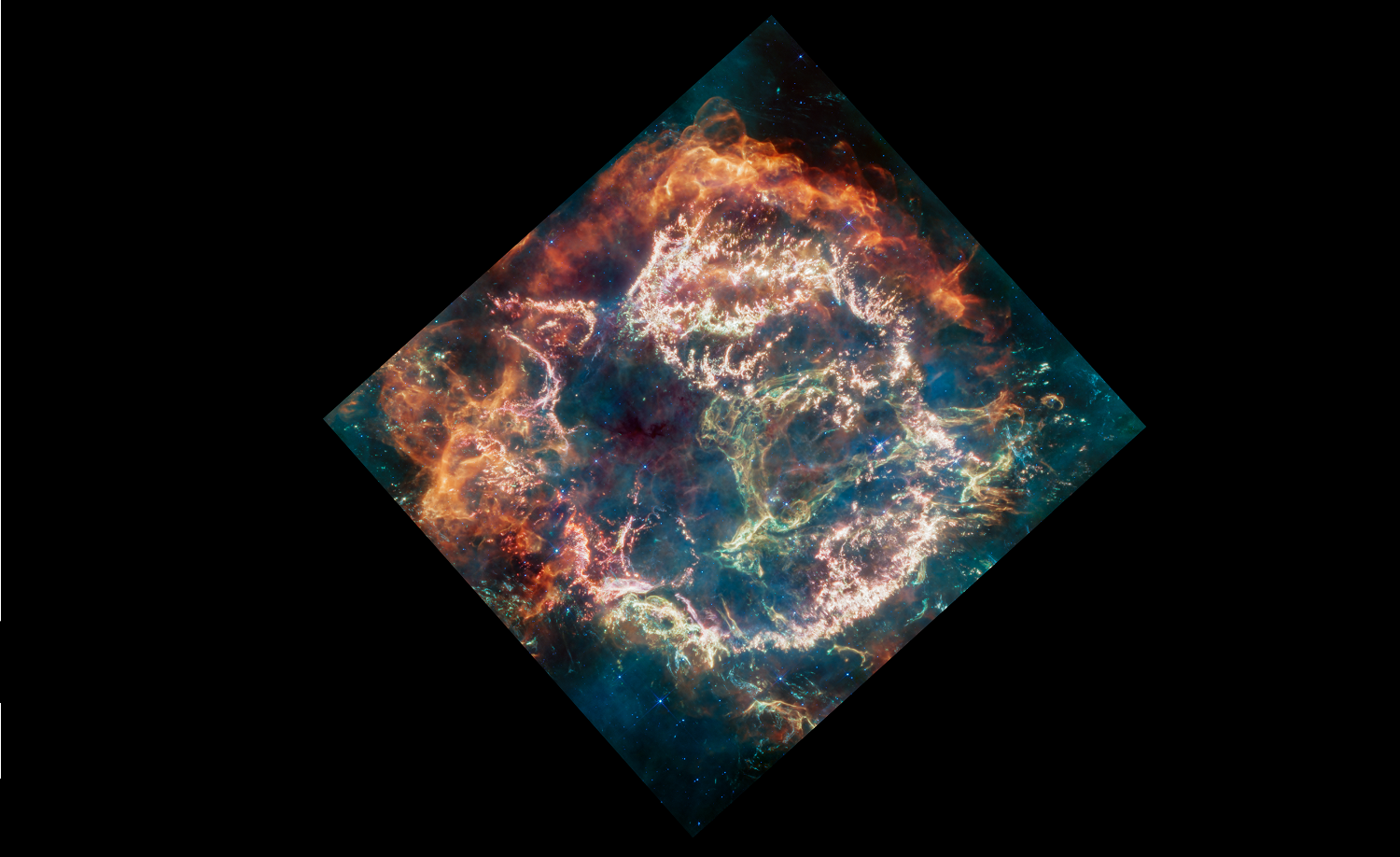James Webb found interesting information in the remnants of the youngest supernova that erupted 340 years ago

One of the James Webb Space Telescope's missions is to study supernova remnants. The atoms that make up everything in the Universe, including ourselves, are ejected during supernova explosions. James Webb is helping scientists learn more about it.
Here's What We Know
James Webb is studying the supernova Cas A from the constellation Cassiopeia, which erupted 340 years ago and is the youngest in the Milky Way. The remains of Cas A are 11,000 light-years away and extend 10,000 light-years.
The Cas A remnant has already been studied by other instruments in the National Aeronautics and Space Administration (NASA) arsenal. In particular, with the Chandra X-ray observatory. The data obtained were combined with images taken by James Webb.
The space telescope takes images in a range invisible to the human eye. In this regard, scientists have specially colored the images. The colouring depends on the frequency of the electromagnetic radiation (from red to blue as the frequency increases).
Orange and red colour the areas where matter ejected by a star collides with the gas around it. The bright pink strands are a mixture of heavy elements, including argon and neon.
Also of note is the presence of a greenish loop in the centre of the image, which extends to the right side of the photo. Scientists have not yet been able to explain its nature. In general, according to researchers, a detailed study of the image will learn more about the nature of dust in interstellar space, about the explosion of stars and the history of our origins.
Source: NASA